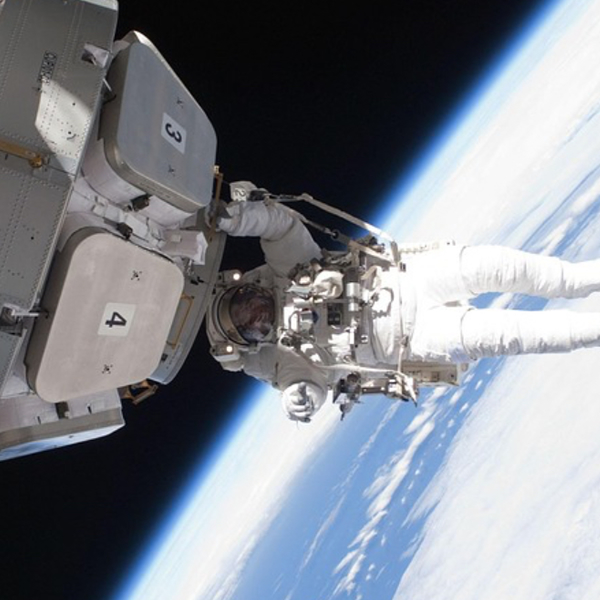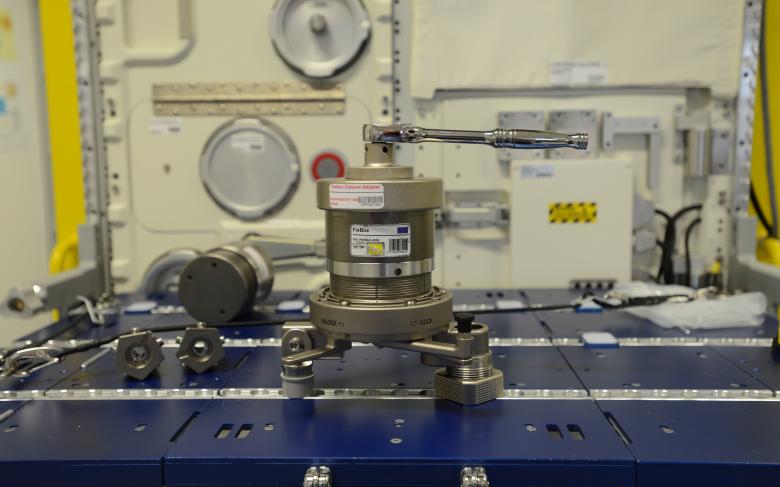
- Diagnostics
- Data Centers
Categories:

At Sener Diagnostics, we firmly believe that our ultimate goal is to bring value to society by continually challenging the status quo and thinking outside the box. This strong belief is summarised by Albert Einstein’s famous phrase:
“Strive not to be a success, but rather to be of value.”
We fulfil this promise by empowering our employees to create synergies and look for ideas in sectors with no direct connection with the microbiological industry, like space, where we have more than 50 years of experience.
This way of thinking has enabled us to build instruments for microbiology that suit our customer’s needs and automation desires, allowing us to become one of the most disruptive micro lab automation companies.
From the aerospace industry to microbiology instruments and diagnostic products

The space industry is the ideal sector to search for out of the ordinary ideas; as Peter Diamandis said:
“Space is an inspirational concept that allows you to dream big.”
Here at Sener Diagnostics, we implement these ideas and experiences into our microbiological devices to benefit society on earth.
There are countless examples of this synergy between space technology and diagnostic products.
Few of them are summarized hereafter:
When astronauts endure spaceflights, their bodies face unnatural biological changes. It is common for them to undergo a 20% muscle mass reduction in spaceflights lasting between 5 to 11 days. This muscle atrophy occurs due to gravity absence, and it is critical for long space trips and stays.

Consequently, to take care of the crew’s health, ESA and NASA launched a contract to Sener to develop one of the most inspiring and complex instruments at Sener Aeroespacial called Muscle Atrophy Research Exercise Systems (MARES). Its purpose is to study the impact which the absence of gravity has on human muscles.
In addition, to the complexity of getting reliable scientific data for future investigation, the device added the extra complexity of being safe in an environment where failure is not an option, as its use could compromise human lives.
MARES was in use in the Columbus module at the ISS (International Space Station) and the NASA Human Research Facility for many years, improving the astronaut’s quality of life. Today, it continues to provide scientific value on the ground at DLR and Roscosmos.
However, humans are not the only living organism that microgravity alters. Sener Aeroespacial also contributed to the other big challenge that the scientific community from NASA and ESA are facing today, which is the absence of gravity in other living beings.

Hence, ESA asked us to develop a critical safety space payload to protect the experiment upon landing and paralyze any further growth of plants nurtured in space for its ground study. We, therefore, developed a device named Fixbox, to study how seeds grow in microgravity conditions under different lights. It was an instrument with demanding safety requirements, as the experiment involved carcinogenic chemicals like formaldehyde. The purpose of these chemicals was to stop the growth of the plants when scientists considered it. Consequently, we designed the device to prevent these dangerous substances from being released into the ISS environment to protect the crew’s lives while guarantying the preservation of the small seedlings.
Preventing microbial contamination on other planets with DEMPCOS
Another worry most researchers at ESA and NASA have regarding future spaceflights to the Moon and Mars is crew health and planetary protection. It is crucial to prevent contamination in human-crewed spaceflights from microorganisms and avert the exportation of our microorganisms into other planets. Hence ESA contracted us to develop an instrument that would quantify and qualify microbial contamination on surfaces. Thus, we invented DEMPCOS, which was an analysis instrument that could detect bacterial contamination in a spaceship.
Instruments for microbiology based on our aerospace developments

The experience and knowledge learnt from developing payloads for space applications are directly applied by our engineers in the design and development of Sener Diagnostics instruments.
For instance, for the AUTOPLAK design, apart from implementing the acquired knowledge gained from developing products for space applications, we also challenged ourselves to use the same methodologies that are typically followed to create space devices. These are certified in the most arduous standard in terms of quality: EN9100. This implementation allowed us to quickly get the ISO 13485 certification for medical devices quality systems.
In Sener Diagnostics, we embraced NASA standard safety requirements previously applied to MARES and FixBox to design the safety aspects of AUTOPLAK.
As previously mentioned, FixBox has demanding safety requirements due to the toxicity of the chemicals involved; this implied implementing two independent containment levels for the risks. Our engineers used the same concept and approach during the design of AUTOPLAK for all the risks that could impact user safety and ensure the diagnosis avoiding effects, such as cross-contamination, which could generate false positives or negatives.

We transferred to AUTOPLAK all the human factors requirements imposed by NASA standards. Its purpose was to make the use of AUTOPLAK as comfortable as possible, despite the size of the user. In addition, it also helped to prevent future professional illnesses due to non-healthy postures during the workday. Hence as the dutch philosopher Desiderius Erasmus said:
“Prevention is better than cure.”
In summary, at Sener Diagnostics, we are constantly searching for new ideas outside the microbiological field. We strongly believe that more value can be brought to society by looking for synergies in initially unassociated areas, such as space.
As Carol Moseley said:
“Magic lies in challenging what seems impossible”
And in Sener Diagnostics, we do what others dream of doing. Our microbiological devices prove that finding synergies between microbiology instrumentation and other unconnected fields (like space) is possible.
And so, will our upcoming devices show!
Would you like to know more about the mplementation of spatial technology in instruments for microbiology? Contact us >

 About us
About us
